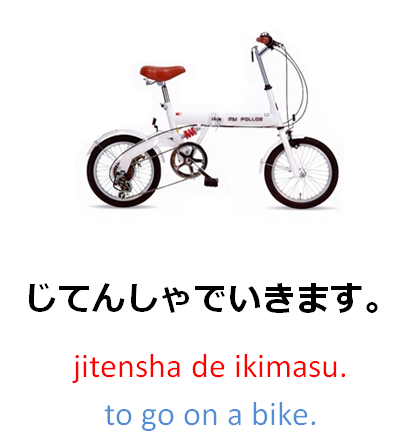きいろいバス kiiroi basu yellow bus
ようちえんの バス yōchien no basu kindy bus

あかいバスakai basu red bus
ほんとうは グリーンバス really a “Green Bus”
でんきバス denki basu electric bus

あおいバスaoi basu blue bus
うしろから バスに のってください
please, enter the bus from the back
あおいバス aoi basu blue bus
かんこうバス kankō basu tourist bus
きいろいバス kiiroi basu yellow bus
はとバス hato basu pigeon bus
かんこうバス kankō basu tourist bus
たくさんの ところに いきます it goes to lots of places
Exception: みどりのバス midori no basu green bus
まえから バスに のってください
please, enter the bus from the front
しろいバス shiroi basu white bus
エクスプレスバス ekusupuresu basu express bus
あおいかんこうバス aoi kankōbasu blue tourist bus
おおきいバス ookii basu big bus
ながいバス nagai basu long bus
あおと しろのバス blue and white bus
ハイブリッドバス haiburiddo basu hybrid bus
グリーンバス ですね!
it’s a Green bus, isn’t it?!
Lesson for today:
put the colour in front of the noun:
あおいバス = blue bus
if there are two colours:
drop the い and use と and の
The reason is that two colours make a new colour: red and white make pink! What you say is: the bus has red and white colour. In our example: the bus has blue colour and white colour.
useful words:
まえ 前 mae front
うしろ 後ろ ushiro back
いりぐち 入口 iriguchi entrance
でぐち 出口 deguchi exit
useful kanji:
前 後ろ 入口 出口




























































